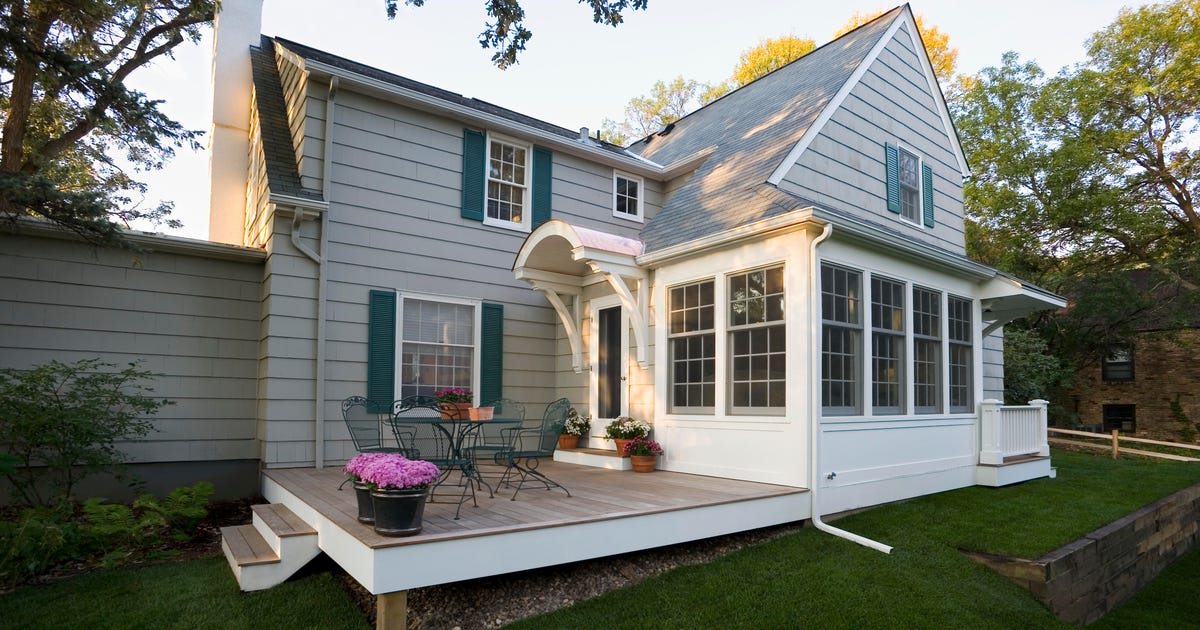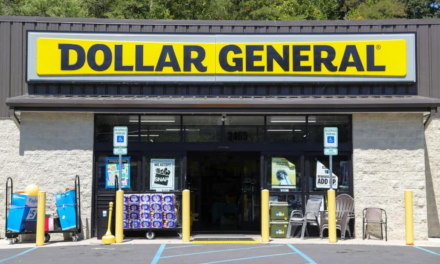A home equity line of credit, or HELOC, is a loan that allows you to borrow against the equity you’ve built in your home and functions like a credit card. It provides an open line of credit that you can access for a certain amount of time (usually 10 years). During that time, you’re only required to pay back the interest on money you’ve withdrawn, which means you can borrow a large amount of money for an extended period of time while only making minimum monthly payments.
HELOCs can be a good option because they have lower rates than most credit cards, personal loans, home equity loans and mortgage refinances. But HELOCs are also risky because they’re secured loans, which require collateral to obtain financing: Your home serves as the collateral, so if you’re unable to pay back the money you’ve withdrawn, you could lose your house. In addition, HELOCs have variable interest rates, meaning your rate can go up or down with the market, so you won’t always have a predictable monthly payment.
Current HELOC rates and trends
The current average interest rate for a HELOC is 7.74%, according to Bankrate, CNET’s sister site. Anything below the average rate is typically considered a good rate for HELOCs.
Interest rates for HELOCs are variable and largely determined by the benchmark interest rate, which is set by the Federal Reserve. So far this year, the Fed has raised the benchmark interest rate six times. Interest rates for HELOCs tend to be lower than mortgage rates and other home equity loan rates, which is one of the benefits. They also usually have introductory periods during which they offer an even lower rate for a certain amount of time.
Top HELOC rates in November 2022
| Lender | Loan amount | Loan term | APR range | Best for |
|---|---|---|---|---|
| Third Federal Savings and Loan | $10,000-$200,000 | 10-year draw period, 30-year repayment period | Starting at 5.49% | Longest repayment period |
| Figure | $20,000-$400,000 | 5, 10, 15 and 30 years | Starting at 5.56% | Quick access to funds |
| PNC | $10,000-$1 million | 5 years to 30 years | Starting at 3.74% for the first six months, then 5.63% | Fixed interest rate |
| Presidential Bank, FSB | $10,000-$500,000 | 10-year draw period | Starting at 2.99% for the first six months, then 3/4 margin above the prime rate | Introductory interest rate |
| Bank of the West | $15,000-$2 million | 10, 15 or 20 years | Starting at 5.99% for the first six months, then 6.64% | Large loan limit |
Note: The above APRs are current as of Oct. 10, 2022. Your APR will depend on factors such as your credit score, income, loan term and whether you enrol in autopay or other lender-specific requirements.
Third Federal Savings and Loan: Best HELOC for the longest repayment period
Overview: A HELOC from Third Federal Savings and Loan comes with a 10-year draw period and a 30-year repayment period.
Why this lender is a good choice: Overall fees tend to be low with Third Federal, as it doesn’t require you to pay an origination fee or closing costs, and the annual $65 fee is waived your first year. Plus, if you find a different lender that offers a lower interest rate, Third Federal says it will match that rate or pay you $1,000 if it can’t.
Other factors to consider: Another benefit is that there are no minimum draw requirements, which is ideal with a HELOC because you don’t have to waste money paying interest on funds you never use. The minimum monthly payment for a Third Federal HELOC is $100.
Figure: Best HELOC for quick access to funds
Overview: The figure says it will deliver funds in as little as five days. The application is entirely online and takes about five minutes to complete, according to Figure. Borrowers must have a good credit score to qualify for the maximum loan ($400,000) that Figure offers. For example, if you have a credit score in the 680-699 range, you can only be approved for a maximum loan of $200,000. The lower your credit score, the smaller loan you will qualify for.
Why this lender is a good choice: In addition to quick access to cash, Figure also offers an appealing fixed interest rate for the balance of your HELOC starting as low as 5.56% for qualified borrowers. A fixed interest rate is especially beneficial in today’s rising interest environment.
Other factors to consider: You must withdraw your entire loan amount upfront with a Figure HELOC, but you can lock in a fixed interest rate. However, any additional withdrawals you make over the course of the loan will be subject to current interest rates and will not be fixed. Keep in mind you must also pay up to a 4.99% origination fee to get the lowest rates offered by Figure.
PNC: Best HELOC for fixed-rate options
Overview: PNC offers a low introductory APR starting at 3.74% for a six-month period, as long as you take out a line of credit $50,000 or larger. Once the introductory period is over, however, your HELOC balance is subject to a variable interest rate and your APR can increase significantly – but with a PNC HELOC, you can also elect to fix your rate multiple times during your draw period and lock in the latest rate.
Why this lender is a good choice: PNC gives you the option to fix your interest rate repeatedly over the course of your HELOC, but you must pay a $100 fee every time you do so. PNC has large loan limits of up to $1 million, which provides flexibility if you need continued access to large amounts of cash for a major life expense like home renovations or college tuition.
Other factors to consider: Your monthly payments will go up significantly once your PNC introductory rate period ends, so it’s important to make sure your budget can comfortably accommodate the surge in your payment. As with many lenders, if you enrol in autopay, you can also receive a discount on your rate.
Presidential Bank, FSB: Best HELOC for a low introductory rate
Overview: Presidential Bank, FSB offers a low introductory rate of 2.99% for the first six months of your loan. When it expires, your rate will only go up a small margin of 0.75% above the prime rate, which is currently 6.25%.
Why this lender is a good choice: You won’t have to pay any additional fees such as closing costs or home appraisal when taking out a HELOC with Presidential as long as you keep your account open for 36 months. You can make unlimited withdrawals from your account during your 10-year draw period and the minimum withdrawal amount is $100.
Other factors to consider: You must live in the home as your primary residence to qualify for a Presidential HELOC and have a combined loan-to-value ratio, or CLTV, no larger than 85%. To be approved for the current advertised rates, you must have a 680 credit score or higher.
Bank of the West: Best HELOC for large loan limits
Overview: Bank of the West offers a higher HELOC limit than most other lenders, with a cap at $2 million. Overall, it has an extensive variety of home loans and personal loans to choose from, as well as specific discount programs. For example, you can save on your interest rate if you use at least $5,000 of your HELOC to invest in solar power improvements for your home.
Why this lender is a good choice: For an initial withdrawal of $50,000 Bank of the West also has an introductory period offering a 5.99% APR for the first six months and a 6.64% variable rate APR after that, which is still a lower than the national average HELOC rate of 7.27%.
Other factors to consider: You can receive further discounts on a HELOC if you become a customer at Bank of the West. Right now, if you have $100,000 or more in qualifying assets with the bank, you can benefit from their relationship pricing and get a 0.25% discount on your rate, as well as an additional 0.25% for enrolling in autopay, which is a common requirement for discounts with many lenders.
Methodology
We evaluated a range of lenders based on factors such as interest rates, APRs and fees, how long the draw and repayment periods are, and what types and variety of loans are offered. We also took into account factors that impact the user experience such as how easy it is to apply for a loan online and whether physical lender locations exist.
How to apply for a HELOC
Before applying for a HELOC, make sure that you’ll be able to qualify for the loan amount you need. Also, confirm it’s the right type of loan for your situation because there are other ways to access your home equity, such as home equity loans or a cash-out refinance. Also make sure you meet the basic requirements of most lenders by having at least 15% to 20% equity in your home, a good credit score and a low combined loan-to-value ratio, or CLTV, which is the ratio of all of your outstanding mortgage balances compared to the market value of your property.
Reach out to lenders
It’s important to interview multiple lenders to find a loan with a favourable interest rate and terms. The more banks and lenders you contact, the better your chances of finding more favourable rates and fees overall. A good place to start can sometimes be the lender or bank that issued your first mortgage since they’ve already approved you for one loan and you have an existing relationship with that lender. Also compare rates from online lenders.
Send in your application
Once you’ve chosen a lender, it’s time to gather all of your financial documentation to verify you can comfortably pay back the HELOC. You’ll need things like proof of income and employment, and in some cases, you may need to pay for a new home appraisal to verify the current market value of your property, especially since home values have skyrocketed over the past two years. After all of your financial paperwork is submitted, the final step is to close on the loan, which can take anywhere from 30 to 60 days depending on the lender.
Tips for comparing multiple HELOC offers
The offers you receive will vary from lender to lender, but the more you know about the specific ins and outs of those offers, the better your chances of saving money and interest on your home loan. There are a few major factors to consider when deciding which HELOC offer to go with.
Introductory rate period
Since HELOCs have variable interest rates that are tied to the prime rate, your interest rate will go up and down over time. Be aware of what the prime rate is and know that you’ll be paying a markup on that interest rate. In the beginning, however, most HELOCs come with a lower introductory rate period, but the length of those initial rates will differ by lender, and you want to find the longest one possible. The longer you have a lower interest rate, the more money you’ll save over time.
Rate cap
Ask what your maximum HELOC interest rate cap will be. HELOCs have lifetime interest rate caps that they can’t legally exceed – so even if the prime rate rises and surpasses your rate cap, your HELOC rate won’t increase any further. If you have an existing HELOC, you can attempt to negotiate a lower rate with your lender. “Ask your current HELOC lender if they will fix the interest rate on your outstanding balance,” says Greg McBride, CFA, chief financial analyst at Bankrate, CNET’s sister site. “Some lenders offer this, but many do not. But it is worth asking the question.”
Minimum withdrawals
Some lenders require minimum withdrawals regardless of your total line of credit, which means you could get stuck making interest payments on funds you don’t actually need if that amount is less than the mandatory minimum withdrawal amount set by your lender. It’s also important to make sure you know when your draw period ends so that you can afford the larger principal-plus-interest payments you must start making once you enter your repayment period.
FAQs
What is a good HELOC rate?
Anything below the average rate is typically considered a good rate for HELOCs. Currently, the average interest rate for a HELOC is 7.74%, according to Bankrate.
How do I qualify for a HELOC?
To qualify for a HELOC, you must have good credit, at least 15% to 20% equity in your home and a debt-to-income ratio that does not exceed 43%. (Your debt-to-income ratio is your total monthly debts divided by your gross monthly income.) So, if you make $4,000 a month before taxes and pay $1,500 in debts each month, your DTI would equal 37.5%. The lower your DTI, the better your approval chances.
If you have good or excellent credit, you could lock in a lower HELOC rate closer to 5% to 6%. If you have below-average credit expect to pay rates closer to 9% to 10%. Lenders usually want to see at least a 620 credit score or higher. You can be denied a HELOC if you don’t have a high enough credit score or income. You can also be denied if you don’t have enough equity built up in your home. Most lenders require at least 15% to 20%.
What can I use a HELOC for?
You can use your line of credit for almost anything, but HELOCs are typically best for people who need access to available credit over a long period of time or who will be making recurring withdrawals. For example, HELOCs are good for home improvement projects that could potentially take years or higher education expenses like tuition.
How do I apply for a HELOC?
You have to be approved for a HELOC by a bank or lender just like with your mortgage. You will need to provide financial documents like pay stubs and information about your home’s value, like your loan-to-value ratio. Lenders will also run a credit check before approving you.
In some cases, you may need to have your home appraised to confirm its current market value. It’s important to interview multiple lenders to compare rates and fees in order to find one who will give you the best rates. Some experts recommend starting with the bank or lender that already holds your mortgage, but shopping around can help you compare offers.




